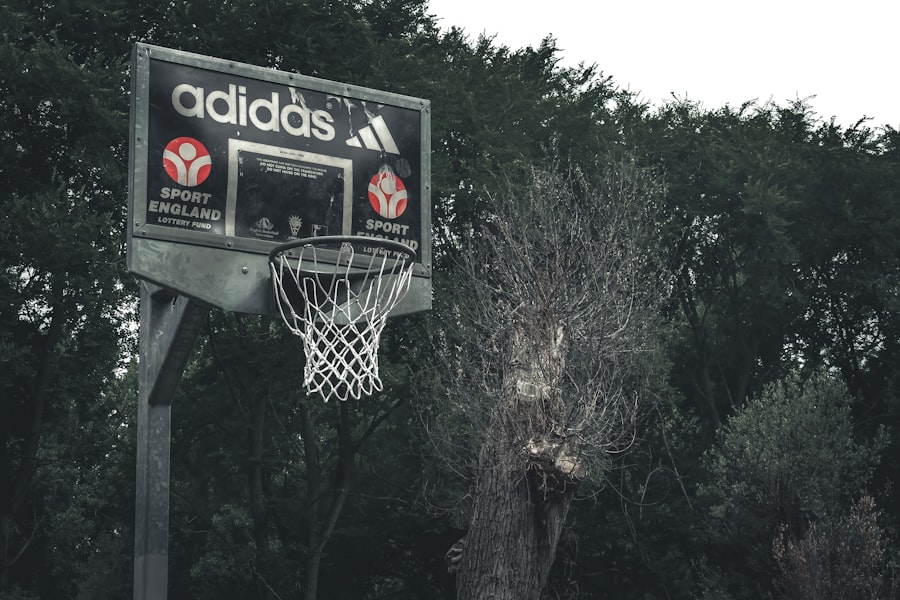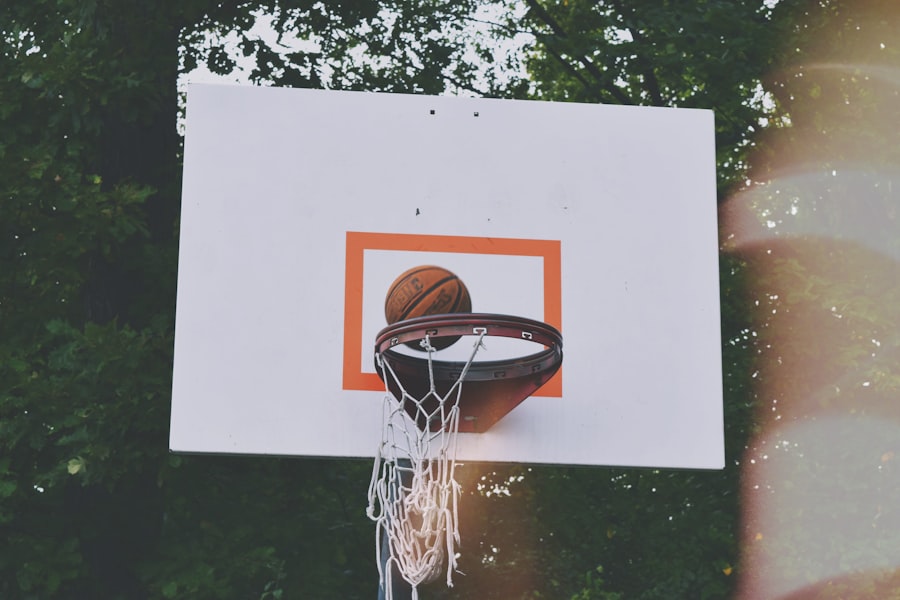In the contemporary sports landscape, player branding has emerged as a formidable force, transcending traditional team affiliations and reshaping the way athletes interact with their fans. The concept of player branding revolves around the idea that individual athletes can cultivate their own identities, narratives, and marketability, independent of their teams. This shift has been particularly pronounced in sports like basketball and soccer, where star players often become global icons.
For instance, LeBron James has successfully established himself not just as a basketball player but as a cultural phenomenon, leveraging his platform to advocate for social issues while simultaneously building a lucrative personal brand. His ventures, including the production company SpringHill Entertainment and various endorsement deals, illustrate how athletes can harness their influence to create diverse revenue streams. Moreover, the power of player branding extends beyond mere financial gain; it fosters a deeper connection between athletes and their fan bases.
Fans are increasingly drawn to the personalities behind the jerseys, seeking authenticity and relatability. This trend is evident in the rise of platforms like Instagram and TikTok, where athletes share glimpses of their lives off the field, allowing fans to engage with them on a more personal level. For example, Cristiano Ronaldo’s social media presence not only showcases his athletic prowess but also offers insights into his lifestyle, family, and philanthropic efforts.
This multifaceted approach to branding enables players to cultivate a loyal following that transcends geographical boundaries, ultimately enhancing their marketability and influence.
Key Takeaways
- Player branding enhances athlete marketability and fan connection.
- Social media is crucial for engaging and expanding the fan base.
- Targeting global markets broadens reach and revenue opportunities.
- Limited edition merchandise drives exclusivity and demand.
- Collaborations with fashion brands and influencers boost visibility and appeal.
Leveraging Social Media for Fan Engagement
Social media has revolutionized the way athletes communicate with their fans, providing an unprecedented platform for direct interaction and engagement. Athletes can now share their thoughts, experiences, and behind-the-scenes moments in real-time, fostering a sense of intimacy that was previously unattainable. Platforms like Twitter, Instagram, and TikTok allow players to connect with fans on a personal level, breaking down barriers that once existed between them.
For instance, NBA players often use Twitter to engage in playful banter with fans or respond to questions about their performance, creating a dynamic dialogue that enhances fan loyalty. Additionally, social media serves as a powerful tool for promoting events and initiatives. Athletes can leverage their platforms to raise awareness for charitable causes or community events, amplifying their impact beyond the realm of sports.
A notable example is NBA star Kevin Durant, who frequently uses his social media presence to promote educational initiatives and community outreach programs. By aligning themselves with meaningful causes, athletes not only enhance their personal brands but also foster a sense of community among their followers. This engagement strategy not only strengthens fan loyalty but also positions athletes as role models who are committed to making a positive difference in society.
Targeting the Global Market

As sports continue to gain popularity worldwide, targeting the global market has become an essential strategy for athletes and brands alike. The globalization of sports has opened up new avenues for revenue generation and fan engagement, allowing athletes to tap into diverse markets that were previously inaccessible. For instance, the NBA has made significant strides in expanding its reach in countries like China and India, where basketball has seen a surge in popularity.
Players like Yao Ming have played a pivotal role in bridging cultural gaps and introducing the sport to millions of new fans. To effectively target global markets, athletes must be culturally aware and adaptable. This involves understanding regional preferences and tailoring their branding strategies accordingly.
For example, soccer superstar Lionel Messi has successfully penetrated markets in Latin America and Europe by aligning himself with local brands and engaging with fans in their native languages. His collaborations with regional sponsors not only enhance his visibility but also foster a sense of connection with fans who see him as one of their own. By embracing cultural nuances and leveraging local partnerships, athletes can create a more profound impact on global audiences.
Creating Limited Edition and Exclusive Merchandise
| Metric | Description | Example Value | Importance |
|---|---|---|---|
| Number of Units Produced | Total quantity of limited edition items created | 500 | High – Controls scarcity and exclusivity |
| Price Premium | Percentage increase over regular merchandise price | 30% | Medium – Reflects exclusivity and perceived value |
| Sell-Through Rate | Percentage of limited edition stock sold within a set period | 85% | High – Indicates demand and success of the release |
| Customer Engagement | Increase in social media mentions and shares related to the merchandise | +40% | Medium – Measures buzz and brand interaction |
| Repeat Purchase Rate | Percentage of customers who buy exclusive merchandise more than once | 25% | Medium – Shows loyalty and satisfaction |
| Production Cost per Unit | Average cost to produce one limited edition item | 15 | High – Affects pricing and profitability |
| Time to Sell Out | Duration from launch to complete sell-out | 10 days | High – Indicates urgency and demand |
The demand for limited edition and exclusive merchandise has surged in recent years, driven by consumers’ desire for unique products that reflect their personal identities and affiliations. Athletes have recognized this trend and are increasingly collaborating with brands to create exclusive merchandise that resonates with their fan bases. These limited releases often generate buzz and excitement among fans, leading to increased sales and brand loyalty.
For instance, Nike’s collaboration with NBA star Kyrie Irving resulted in a series of limited-edition sneakers that sold out within minutes, showcasing the power of exclusivity in driving consumer interest. Moreover, creating exclusive merchandise allows athletes to tell their stories through their products. Each item can embody an athlete’s journey, values, or cultural influences, making it more than just a piece of clothing or gear; it becomes a symbol of connection between the athlete and their fans.
For example, the “I Can’t Breathe” T-shirt worn by NBA players during warm-ups in 2014 became a powerful statement against racial injustice while simultaneously serving as a unique piece of merchandise that fans could rally around. By infusing social messages into their merchandise offerings, athletes can create products that resonate deeply with their audience while also driving sales.
Collaborating with Fashion and Streetwear Brands
The intersection of sports and fashion has become increasingly prominent in recent years, with athletes collaborating with fashion and streetwear brands to create unique collections that appeal to both sports enthusiasts and fashion-forward consumers. These collaborations not only elevate an athlete’s brand but also position them as trendsetters within the fashion industry. For instance, NBA player Russell Westbrook has made headlines for his bold fashion choices and collaborations with high-end designers like Barneys New York and his own line called “Honor the Gift.” His ability to merge sports with fashion has garnered him recognition beyond the basketball court.
Collaborating with fashion brands allows athletes to tap into new demographics while also enhancing their personal style narratives. The rise of athleisure—a blend of athletic wear and casual fashion—has further blurred the lines between sports and style. Athletes like Serena Williams have embraced this trend by launching their own clothing lines that reflect their personal aesthetics while catering to a broader audience.
By aligning themselves with fashion-forward brands, athletes can create products that resonate with consumers who prioritize both performance and style.
Utilizing Influencer and Celebrity Endorsements

Influencer marketing has become a cornerstone of modern branding strategies, particularly in the realm of sports. Athletes are increasingly leveraging influencer partnerships to amplify their reach and connect with diverse audiences. Collaborating with social media influencers or celebrities allows athletes to tap into established fan bases while enhancing their own visibility.
For example, when NBA star Stephen Curry partnered with popular YouTube influencers for promotional campaigns, he was able to engage younger audiences who may not have been traditional basketball fans. Moreover, celebrity endorsements can significantly impact an athlete’s brand perception. When high-profile figures endorse an athlete or their products, it lends credibility and prestige to their brand.
A notable example is tennis champion Naomi Osaka’s collaboration with Louis Vuitton; her association with such a prestigious fashion house not only elevated her status within the fashion industry but also reinforced her position as a global ambassador for tennis. By strategically aligning themselves with influential figures across various industries, athletes can enhance their brand equity while reaching new consumer segments.
Implementing Innovative Retail and E-Commerce Strategies
In an era where online shopping has become the norm, implementing innovative retail and e-commerce strategies is crucial for athletes looking to maximize their merchandise sales. The rise of direct-to-consumer (DTC) models has empowered athletes to take control of their branding efforts by selling products directly through their own platforms rather than relying solely on traditional retail channels. This approach allows for greater profit margins while fostering a more personalized shopping experience for fans.
Athletes are also leveraging technology to enhance the online shopping experience. Augmented reality (AR) features enable consumers to visualize products in real-time before making a purchase decision. For instance, some brands have introduced AR applications that allow fans to virtually try on sneakers or apparel before buying them online.
This innovative approach not only enhances customer engagement but also reduces return rates by ensuring that consumers are satisfied with their choices before completing a purchase.
Building Fan Loyalty through Community and Events
Building fan loyalty goes beyond mere transactions; it involves creating meaningful connections within communities that resonate with shared values and experiences. Athletes are increasingly recognizing the importance of fostering these connections through community engagement initiatives and events that bring fans together. Hosting charity events or participating in local outreach programs allows athletes to demonstrate their commitment to social causes while strengthening ties with their fan base.
Events such as meet-and-greets or fan festivals provide opportunities for athletes to interact directly with supporters, creating lasting memories that deepen fan loyalty. For example, NFL players often host youth football camps where they share skills and knowledge with aspiring young athletes while forging connections with families in the community. These initiatives not only enhance an athlete’s brand image but also cultivate a sense of belonging among fans who feel personally invested in the athlete’s journey.
In conclusion, the multifaceted approach to player branding encompasses various strategies that leverage social media engagement, global market targeting, exclusive merchandise creation, collaborations with fashion brands, influencer partnerships, innovative retail strategies, and community-building events. Each element plays a vital role in shaping an athlete’s identity while fostering deeper connections with fans across diverse demographics. As the sports landscape continues to evolve, embracing these strategies will be essential for athletes looking to thrive in an increasingly competitive environment.



